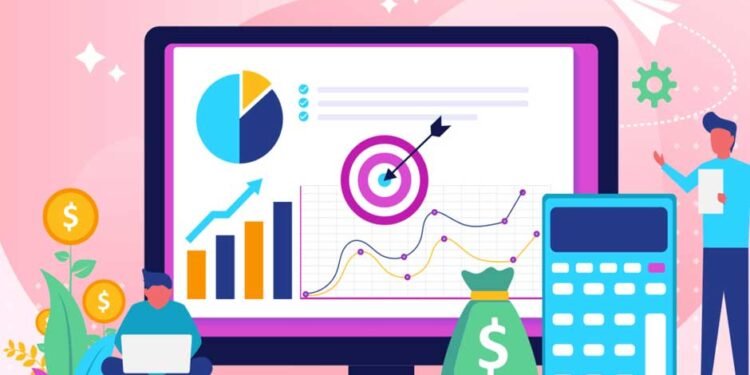Investing in inbound marketing is a smart strategy for growing your business, but knowing if your efforts are delivering the expected returns is essential. Measuring inbound marketing ROI (Return on Investment) goes beyond just tracking leads and traffic—it’s about understanding how each campaign contributes to your revenue and overall business growth.
But which metrics should you focus on? This guide covers seven key metrics that provide a comprehensive view of your inbound marketing ROI. They help you evaluate the success of your efforts and make data-driven decisions for future campaigns.
1. Customer Acquisition Cost (CAC)
- What It Is: Customer Acquisition Cost (CAC) is the total cost of acquiring a new customer, including marketing expenses, advertising costs, and sales efforts.
- How to Calculate: Add up all your marketing and sales costs for a specific period and divide by the number of new customers acquired during that time.
Example: If you spend $10,000 on marketing and sales in one month and gain 100 new customers, your CAC is $100.
- Why It Matters: CAC helps you understand how efficiently your inbound marketing strategies attract new customers. A lower CAC means your efforts are more cost-effective.
Pro Tip: Track CAC over time to see if it’s improving. If CAC increases, consider revisiting your marketing strategies or refining your targeting.
2. Customer Lifetime Value (CLV)
- What It Is: Customer Lifetime Value (CLV) is the total revenue you can expect from a customer over their relationship with your business.
- How to Calculate: Multiply the average purchase value by the purchase frequency and average customer lifespan.
Example: If a customer spends $50 monthly and stays with you for 3 years, their CLV is $1,800.
- Why It Matters: CLV helps you understand the long-term value of your customers and whether your inbound marketing efforts are bringing in high-quality leads. A high CLV indicates strong customer loyalty and engagement.
Pro Tip: Compare CLV to CAC. If your CAC is higher than your CLV, you’re spending more to acquire customers than they’re worth, which means you need to optimize your marketing strategy.
3. Lead Conversion Rate
- What It Is: Lead Conversion Rate measures the percentage of leads that become paying customers.
- How to Calculate: Divide the number of converted leads by the total number of leads, then multiply by 100 to get the percentage.
Example: If you have 500 leads and 50 become customers, your conversion rate is 10%.
- Why It Matters: A high lead conversion rate indicates that your inbound marketing content and strategies effectively move leads through the sales funnel. It shows that your content resonates with your audience and that your leads find value in what you offer.
Pro Tip: Identify which content or offers are generating the most conversions, and focus on creating more of that type of content to boost your ROI.
4. Organic Traffic and Growth
- What It Is: Organic traffic is the number of visitors coming to your website through unpaid search results.
- How to Track It: Use tools like Google Analytics to monitor organic traffic growth. Look at metrics such as the number of organic visits, pages visited, and average time spent on your site.
- Why It Matters: Organic traffic growth is a sign that your content marketing and SEO strategies are working. More organic traffic usually means higher visibility and a steady stream of new leads, which boosts your inbound marketing ROI.
Pro Tip: Focus on optimizing for high-performing keywords related to your business. Monitor which pages attract the most traffic and update those pages regularly to keep the content relevant.
5. Social Media Engagement
- What It Is: Social media engagement measures how your audience interacts with your social media content. This includes likes, comments, shares, retweets, and followers.
- How to Track It: Each platform has its own analytics tools, such as Facebook Insights, Twitter Analytics, and LinkedIn Analytics. Track engagement rates, the number of shares, and the type of content that receives the most attention.
- Why It Matters: High social media engagement shows your content resonates with your audience. It indicates strong brand awareness and a solid connection with your followers, which can lead to more qualified leads.
Pro Tip: Use engagement data to identify the types of content that your audience prefers. Create more of this content to build a stronger relationship with your audience and increase your inbound marketing ROI.
6. Bounce Rate
- What It Is: Bounce rate measures the percentage of visitors who leave your website after viewing just one page.
- How to Calculate: Divide the number of single-page visits by the total number of visits, then multiply by 100 to get the percentage.
Example: If 300 visitors land on your site and 150 leave after viewing only one page, your bounce rate is 50%.
- Why It Matters: A high bounce rate means visitors aren’t finding what they need on your site, which affects your inbound marketing performance. Optimizing for lower bounce rates can keep visitors engaged and lead to more conversions.
Pro Tip: Review the pages with the highest bounce rates. Check if the content matches the visitor’s intent, and ensure that the page is easy to navigate. Improving your site’s speed and design can also help reduce bounce rates.
7. Return on Investment (ROI)
- What It Is: Return on Investment (ROI) measures the overall profitability of your inbound marketing efforts.
- How to Calculate: (Total Revenue – Total Costs) / Total Costs * 100.
Example: If you spent $20,000 on inbound marketing and generated $80,000 in revenue, your ROI is 300%.
- Why It Matters: ROI is the most straightforward way to measure the success of your inbound marketing strategy. A high ROI means your campaigns are generating more revenue than they cost, proving that your inbound marketing is effective.
Pro Tip: Break down ROI by individual campaigns to see which ones are performing the best. Allocate more resources to the high-performing campaigns for maximum profitability.
Conclusion
Measuring inbound marketing ROI requires looking at multiple metrics to get a complete picture of your marketing performance. By tracking metrics like Customer Acquisition Cost, Customer Lifetime Value, and Lead Conversion Rate, you can see what’s working and what needs improvement. Understanding your inbound marketing ROI helps you allocate resources effectively, optimize your strategies, and ultimately, grow your business.
If you need help setting up and tracking these metrics, consider consulting a professional inbound marketing agency. They can provide insights, strategies, and tools to help you maximize your inbound marketing ROI and achieve your business goals.












